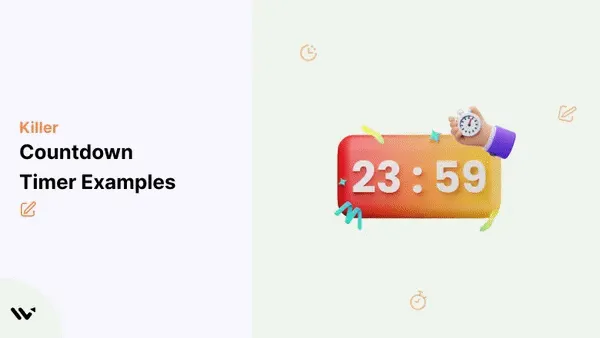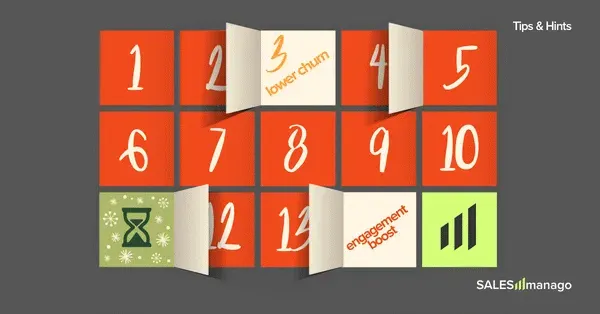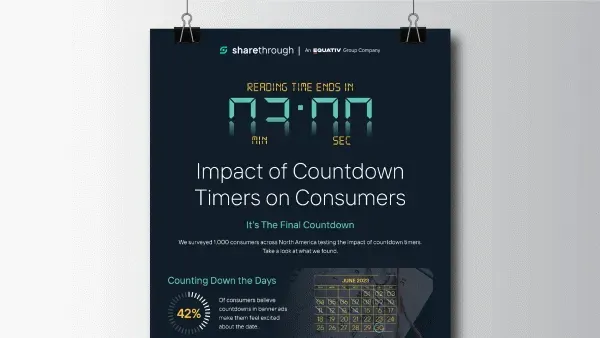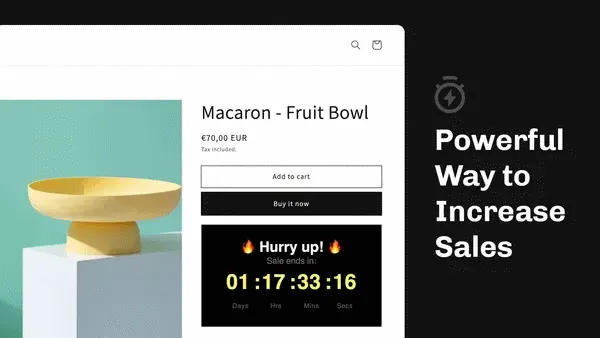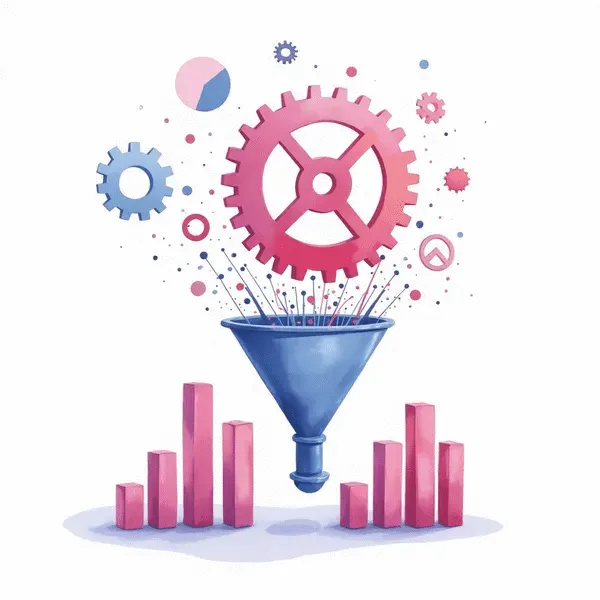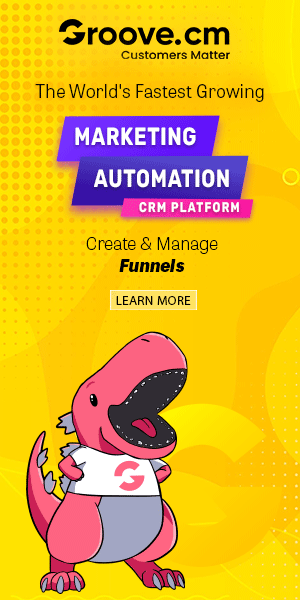Race Against the Clock: How Countdown Timers Turn Online Hesitation Into Action
Average Reading Time: 6min.
Table of Contents
- Introduction: Pushing Buttons: The Psychology Behind Urgency Creation
- Chapter 1: Scarcity Tactics Gone Wild: When Less Becomes More
- Chapter 2: Design or Disaster: Crafting Visual Countdown Timers that Actually Convert
- Chapter 3: Beyond the Clock: Personalization, Analytics, and Best Practice Marketing Strategy
- Conclusion: Imperfect but Authentic: The Hidden Rules of Urgency Marketing
So, picture this: You’re shopping online for those outrageously cozy slippers, and as you scroll, a timer pops up—“Only 12 minutes left to snag 30% off!” Suddenly, your coffee break turns into a race. Been there? That moment is the perfect blend of stress, excitement, and impulse—proof that urgency seriously works. Before you know it, your slipper order is flying through and you wonder: did I just outsmart myself? Welcome to the world of countdown timers, where digital marketing meets a ticking clock and hesitation doesn’t stand a chance.
Become a DigiTimer Affiliate and Start Making Money Today! Signup Here
Pushing Buttons: The Psychology Behind Urgency Creation
Ever noticed how your heart rate ticks up when you see a countdown timer flashing “Only 10 minutes left!” on a product page? That’s not just clever design—it’s urgency creation at work, and it’s one of digital marketing’s most powerful psychological levers. Marketers have learned to tap into our FOMO (fear of missing out) and loss aversion instincts, turning hesitation into action with a simple, shrinking clock.
How Countdown Timers Ignite FOMO
Countdown timers are more than just visual cues—they’re psychological triggers. The moment a timer appears, shoppers feel the pressure of a ticking deadline. It’s the classic FOMO marketing move: act now, or miss out forever. This sense of urgency is no accident. Research shows that when people believe an opportunity is slipping away, they’re far more likely to act impulsively. That’s the scarcity heuristic in action—our brains are wired to value what’s running out.
Scarcity and Loss Aversion: The Secret Weapons
Scarcity marketing works because we hate losing more than we love winning. This is loss aversion, a bias that makes us desperate to avoid regret. Countdown timers amplify this effect by making the potential loss feel immediate and real. As Dr. Olivia Carter, Behavioral Psychologist, puts it:
Countdown timers tap deeply into our innate desire to prevent loss—and that’s marketing magic in action.
When a timer is counting down, the product or deal suddenly feels more valuable, and the urge to buy grows stronger. It’s not just theory—industry data backs it up.
Real-World Quirks: Why a Shrinking Clock Changes Decisions
It’s fascinating how a simple timer can override our usual shopping habits. Instead of comparing options or waiting for a better deal, shoppers often leap at the chance before the clock hits zero. This isn’t just anecdotal. SaleCycle’s research found that countdown timers drove a 231% increase in click-through rates and a 200% boost in conversion rates for their clients. The Diamond Store saw a staggering 400% jump in conversions during Black Friday, all thanks to the ticking clock effect.
Industry Data: The Numbers Don’t Lie
- SaleCycle: 231% higher CTR, 200% more conversions with timers
- The Diamond Store: 400% conversion rate leap on Black Friday
- Timer display ads: 16% lift in brand awareness
These numbers prove that countdown timers don’t just create urgency—they drive real business results. When urgency creation is paired with a compelling offer, shoppers are far more likely to act fast, boosting both conversion rates and click-through rates.
Become a DigiTimer Affiliate and Start Making Money Today! Signup Here
Scarcity Tactics Gone Wild: When Less Becomes More
Scarcity marketing has always thrived on the idea that what’s rare is valuable. But in the digital age, scarcity tactics have taken on a new life—sometimes for better, sometimes for… well, let’s just say, a little too much. At the center of this evolution are countdown timers: those ticking clocks that nudge us from “maybe later” to “buy now.” But not all countdown timers—or the urgency tactics behind them—are created equal.
Evergreen, Fixed, and Dynamic Countdown Timers: The Good, the Bad, the Manipulative?
Let’s break down the three main types:
- Evergreen countdown timers create fresh urgency for every visitor. Picture a 24-hour discount that resets for each new signup—personalized, persistent, and perfect for onboarding flows or email offers.
- Fixed countdown timers are all about the collective experience. Think of a product launch set for February 10th at 10:00 AM EST. Everyone sees the same clock, building anticipation and a sense of community.
- Dynamic countdown timers take things further, adjusting based on user location, device, or behavior. This hyper-personalization makes the urgency feel even more real—and research shows it can boost engagement and conversions dramatically.
But here’s the catch: overusing these scarcity tactics can backfire. When every offer is “ending soon,” shoppers get wise. Inauthentic scarcity leads to skepticism, and trust is hard to win back.
Real Brands, Real Results: Netflix, Amazon, and Sephora
Major brands have mastered the art of scarcity marketing. Netflix uses segmented countdowns to tease new releases—think of the buzz around “The Queen’s Gambit.” Amazon’s Prime Day deals rely on fixed timers to drive a collective shopping frenzy. Sephora? They combine exclusive, members-only offers with dynamic countdowns, making every Beauty Insider feel like a VIP.
Become a DigiTimer Affiliate and Start Making Money Today! Signup Here
These brands don’t just slap a timer on every deal. They use data from past campaigns to optimize their urgency tactics, ensuring each countdown is both relevant and effective. Studies indicate that this approach can increase click-through rates by over 200% and conversion rates by up to 400%.
Not Every Offer Deserves a Countdown
Here’s a secret: not every sale or promotion needs a timer. If the value isn’t clear, no amount of urgency will move the needle. Savvy shoppers spot fake scarcity a mile away. As Priya Patel, Growth Marketer, puts it:
Scarcity isn’t about tricking people—it’s about showcasing real value, fast.
Fear-Based Urgency vs. Value-Packed Scarcity
There’s a fine line between motivating action and creating anxiety. The best scarcity marketing strategies use countdown timers to highlight genuine value—never just to stir up FOMO. When less truly becomes more, customers feel empowered, not pressured. And that’s when scarcity tactics go from wild… to wildly effective.
Design or Disaster: Crafting Visual Countdown Timers that Actually Convert
When it comes to digital marketing, the difference between a countdown timer that boosts conversion rates and one that irritates visitors often comes down to visual design. Research shows that the way a timer looks—and where it sits on the page—can make or break customer engagement. But what exactly separates a high-performing timer from a digital eyesore?
Color, Motion, and Placement: The Secret Sauce
Let’s start with color. Red is the classic choice for urgency—it grabs attention fast and signals that time is running out. But it’s not always the best pick. Blue, on the other hand, conveys trust and can help calm skeptical users, making it ideal for audiences who need reassurance before acting. The trick is knowing your audience and matching the timer’s color to your campaign’s emotional goal.
Become a DigiTimer Affiliate and Start Making Money Today! Signup Here
Motion is another powerful tool. Subtle animations—like pulsating numbers or a ticking progress bar—draw the eye and reinforce urgency. But overdo it, and you risk annoying your visitors. The best timers use just enough movement to get noticed without overwhelming the rest of your visual design.
Above the Fold: Where Timers Shine
Placement matters more than most realize. According to a Hotjar case study, countdown timers placed above the fold (visible without scrolling) saw significantly higher engagement than those buried lower on the page. When a timer is positioned near a call-to-action (CTA), it acts as a visual nudge, turning hesitation into action. It’s a simple tweak with outsized impact on conversion rates.
Design for Visibility and Usability
- Contrast: Use bold colors that stand out against your site’s background.
- Legibility: Choose clear, readable fonts—especially on mobile devices.
- Prominent Placement: Keep timers close to CTAs and above the fold for maximum effect.
And don’t forget technical features. The best countdown timer tools offer user-friendly customization, robust analytics, and seamless integration with your marketing stack. Mobile responsiveness is a must—timers should look sharp and function perfectly across all devices and channels.
Design is the silent salesperson. Your timer’s look should make people excited, not anxious. – Layla Jenkins, UX/UI Designer
Effective timer design is more than just a ticking clock. It’s about combining strong visual cues, smart animation, and compelling copy. Split-testing with tools like Hotjar or Google Analytics can help you fine-tune placement, color, and messaging to maximize customer engagement and conversion rates. In the end, a well-crafted countdown timer isn’t just a deadline—it’s a catalyst for action.
Beyond the Clock: Personalization, Analytics, and Best Practice Marketing Strategy
Countdown timers have become a staple in digital marketing, but their real power emerges when paired with smart personalization techniques and robust analytics. Brands like Birchbox and TechHaven are leading the way, using customer data to deliver urgency at just the right moment. Instead of blasting the same timer to every subscriber, they tailor countdowns to individual behaviors—think dynamic emails that trigger a 24-hour offer right after a customer browses a specific product. This level of personalization transforms generic urgency into a genuine nudge, boosting customer engagement and, ultimately, conversion rates.
Become a DigiTimer Affiliate and Start Making Money Today! Signup Here
But let’s be honest: it’s easy to fall into the copy-paste marketing trap. Too many brands simply slap a timer on their site and call it a day. The best marketing strategy goes deeper. Research shows that using countdown timers as a personalization technique can increase click-through rates by over 200% and drive conversion rates even higher. The Diamond Store, for instance, saw a 400% jump in conversions during a Black Friday campaign by integrating personalized countdowns. What sets top performers apart is their commitment to continuous optimization—testing, tweaking, and learning from every campaign.
Metrics matter. Conversion rate, click-through rate (CTR), engagement, bounce rate—these numbers tell a story, but they don’t capture the whole picture. The human element is just as important. Are customers feeling pressured or genuinely excited? Tools like Google Analytics, Tag Manager, and Hotjar help marketers dig deeper, revealing not just what’s happening, but why. A/B testing different timer placements, durations, and messages can uncover what resonates best with each audience segment. TechHaven, for example, used these insights to refine their countdown messaging, resulting in higher engagement and lower bounce rates.
FasterCapital takes this data-driven, customer-centric approach to a global scale. Since 2014, they’ve supported over 734 startups, helping raise more than $2.2 billion and connecting entrepreneurs with a vast network of 155,000+ angels and 50,000 VCs. Their services go beyond funding—they offer technical cofounding, business plan reviews, and hands-on consulting, all grounded in best practice marketing strategy. This ecosystem support means startups can focus on what matters: building products and campaigns that truly connect with customers.
Good marketing isn’t formulaic—it’s adaptable, always learning, and genuinely invested in service. – Ethan Rivera, Startup Advisor
Ultimately, personalization and continuous tracking make countdown strategies work harder. By leveraging analytics and customer insights, brands can avoid one-size-fits-all tactics and build marketing campaigns that feel timely, relevant, and human—driving real results in the fast-paced world of digital marketing.
Imperfect but Authentic: The Hidden Rules of Urgency Marketing
Countdown timers have become a staple in the modern marketing strategy toolkit, driving customer engagement and leveraging scarcity marketing to boost conversions. But as research shows, the real magic of urgency tactics isn’t just in the ticking clock—it’s in how brands wield them with authenticity and transparency. The difference between a surge in sales and a social media backlash often comes down to whether that urgency feels genuine or forced.
Become a DigiTimer Affiliate and Start Making Money Today! Signup Here
Consider the accidental lessons learned from campaigns gone sideways. A countdown timer that glitches, resets endlessly, or promotes an irrelevant deal doesn’t just fail to convert—it erodes trust. Customers are quick to spot manufactured urgency, and when they do, the backlash can be swift. Yet, some of the most memorable marketing recoveries have come from brands that owned their mistakes. Oreo’s witty response to a Super Bowl blackout and Taco Bell’s quick pivots after campaign missteps didn’t just salvage their reputations—they deepened customer loyalty. These brands understood that empathy and transparency matter more than perfection.
So, why do authentic, value-first offers outlast manufactured urgency every time? It’s simple: people crave connection. A countdown timer is effective when it highlights a real opportunity, not just a manufactured deadline. Take Lush’s “Naked” campaign, for example. By focusing on sustainability and transparency—offering packaging-free products for a limited time—Lush created urgency rooted in genuine value. Customers didn’t just buy because time was running out; they bought because the offer aligned with their values.
Practicality matters, too. To keep countdowns honest, helpful, and human, marketers should avoid overusing timers or attaching them to irrelevant deals. Ensure timers are technically sound and clearly communicate what’s at stake. If a timer fails or a campaign misses the mark, don’t hide it—address it openly and pivot with empathy. As Jamie Lin, Marketing Director, puts it:
The timer doesn’t make the sale—the trust you build along the way does.
Ultimately, genuine urgency only works when built on a foundation of real value and connection. Brands that avoid shortcuts and invest in continuous customer insight will find that their urgency tactics drive not just conversions, but lasting relationships. In the race against the clock, it’s not about being flawless—it’s about being real. That’s the hidden rule of urgency marketing, and it’s what separates fleeting wins from enduring success.
For more information on DigiTimer, you can check out the following URL:
- Website (Product Information): https://digitimer.cc
- JV Website (JV Information & Signup): https://digitimer.cc/jv
- Community: (Questions, Details, etc): https://community.digitimer.cc/
Become a DigiTimer Affiliate and Start Making Money Today! Signup Here
P.S. Don't forget to follow us on social media, the community, the website and the - - YouTube channel for even more inspiration and updates!
- Website: https://thereviewshed.cc
- Website: https://van-santen-enterprises.com
- Community: https://community.van-santen-enterprises.com
- Marketing Courses: https://thetraininghub.cc
- The Store: https://van-santen-enterprises.cc
- YouTube Channel: @VanSantenEnterprises
To Learn more about "Digital Marketing" or to stay informed, subscribe to the free newsletter or community.
CountdownTimers, #UrgencyTactics, #MarketingStrategy, #DigitalMarketing, #FOMO, #ConversionHacks, #EntrepreneurTips, #StartupGrowth, #ScarcityMarketing
TL;DR: Countdown timers are more than a flashy add-on—they’re science-backed urgency machines. Used cleverly, they turbo-charge click-throughs, conversions, and customer engagement, all while weaving psychology into the digital experience. Just remember: authenticity and value always win over empty urgency.


